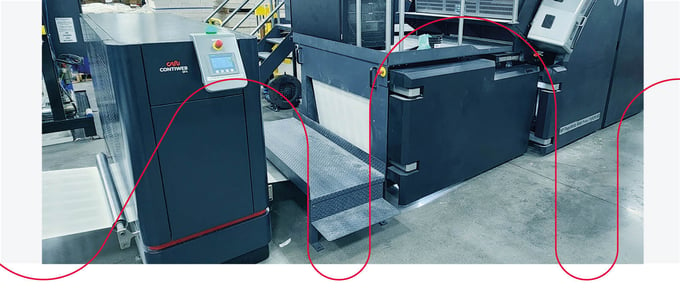Tackling Staff Shortages with Automation
For some time now, substantial personnel shortages have been reported in the media. These shortages affect all sectors of the economy. The printing industry has not escaped this trend. In fact, it may even be more difficult to recruit staff in our industry. Print has a somewhat old-fashioned image and, under the influence of reports about layoffs and closures of conventional printing companies, students and young adults are opting for other courses where they see more prospects.
Digital printing companies have an advantage in recruiting staff compared to those in conventional printing. The operation of a modern inkjet printing press often does not require specific graphic education or a long training period, allowing them to rely on a larger pool of people in the labor market. Nevertheless, competition is fierce and it remains difficult to fill vacancies with various adverse effects as a result.
For example, we know of printing companies where staff work overtime structurally in trying to deliver the orders to the customer on time. Of course, most employees are happy to think along and are more than willing to go the extra mile every now and then. But working longer hours for longer periods of time has a negative impact on the physical and mental condition of employees and has a major influence on their social life. As a result, more mistakes are made in work, employees become dissatisfied and people drop out due to illness.
In addition, there are the higher personnel costs resulting from overtime. Often, a higher rate applies for overtime than the standard hourly wage, which leads to higher cost prices. We heard from one printer where this resulted in an increase of 75% in personnel costs. It is impossible to (fully) pass on the cost price increase to the customer, and cutting back on the profit margin for a long period of time is not an option either. Printing companies must look for ways to depend less on the labor factor. But how?
Previously, we published a blog on our website by Sean Smyth about Value Stream Mapping. This approach identifies every activity carried out over the course of a shift or a day for a machine, or a personnel member. Once you have insight into the activities, you can look at where the use of human labor might be reduced. For example, by investing in smart equipment that take over these activities (often better, faster and ultimately cheaper).
In companies that work with a web inkjet printing press, manually changing a paper reel could be identified as a time-consuming activity by Value Stream Mapping. Changing a paper reel manually can easily take 15 minutes per change. With only four paper changes per day, an hour of scarce working time is lost. That hour may have to be compensated for in overtime, due to a shortage of staff or a deadline set by the customer. There goes your profit margin!
Changing paper rolls is an example of an activity that can easily be replaced by a system such as the Contiweb CDN non-stop auto splicer. The perception is often that such a system only pays for itself when operating very wide, fast workhorse printing presses with a lot of paper reel changes. However, our experience is that it can also be interesting to invest in this system for narrower and slower printing presses.
Are you considering reducing the labor factor in your production process? Would you like to produce faster, at lower costs? Use our handy Savings Calculator to see if an investment in non-stop auto splicing equipment will pay off for you!



